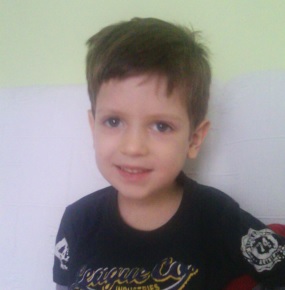Ceroid lipofuscinosis is also called Batten disease.
What is Batten disease?
The disease is named after the British pediatrician, who first described it in 1903. It is also known as Spelmayer-Vogt-Sjorgen-Batten disease and it is the most common form of a group of disorders called neuronal ceroid lipofuscinosis (or NCLs).
Although Batten disease is usually regarded as the juvenile form of NCL, some physicians use the term Batten disease to describe all forms of NCL. Forms of NCL are classified according to the age of symptomatic onset. They all have a common ground, however, the course of the disease and its progression are different.
With time, children with Batten disease are diagnosed with mental impairment, worsening seizures, and progressive deterioration in vision and motor skills. Eventually, a child loses sight, no longer gets out of bed and loses contact with the environment. The disease always ends in death. Batten disease is not contagious and cannot be prevented.
NCL/Batten disease forms
There are four main forms of NCL, including two starting in early childhood, and two affecting adults. The symptoms are similar, but the diseases manifest themselves at different stages of life and progress at different rates.
Infantile NCL (Santavuori-Haltia disease) begins between 6 months and 2 years of age and progresses rapidly. Affected children fail to thrive and have abnormally small heads (microcephaly) Also typical are short, sharp muscle contractions called myoclonic jerks. Initial signs of this disorder include delayed psychomotor development with progressive deterioration, other motor disorders, or seizures. The infantile form has the most rapid progression and children live into their mid childhood years.
Late Infantile NCL (Jansky-Bielschowsky disease, LINCL) begins between ages 2 and 4. The typical early signs are loss of muscle coordination (ataxia) and seizures along with progressive mental deterioration, though afflicted children may show mild-severe delays in speech development well before other symptoms appear. This form progresses rapidly and ends in death between ages 8 and 12.
Juvenile NCL (Batten disease, JNCL) begins between the ages of 5 and 8 years of age. The typical early signs are progressive vision loss, seizures, ataxia or clumsiness. This form progresses less rapidly and ends in death in the late teens or early 20s, although some may live into their 30s.
Adult NCL (Kufs disease, Parry’s disease, ANCL) generally begins before the age of 40, causes milder symptoms that progress slowly and does not cause blindness. Although age of death is variable among affected individuals, this form does shorten life expectancy.
How many people are affected by Batten disease?
Batten disease is quite rare and occurs in an estimated 2 to 4 out of every 100,000 live births in the United States. It is known all around the world. Although NCL was classified as a rare disease, it often happens that it affects more than one person in a family in which there is the defective gene.
How is NCL inherited?
Childhood NCLs are autosomal recessive disorders; that is, they occur only when a child inherits two copies of the defective gene, one from each parent. When both parents carry one defective gene, each of their children faces one in four chance of developing NCL. At the same time, each child also faces a one in two chance of inheriting just one copy of the defective gene. Individuals who have only one defective gene are known as carriers, meaning they do not develop the disease, but they can pass the gene on to their own children.
Adult NCL may be inherited as an autosomal recessive (Kufs) or, less often, as an autosomal dominant (Parry’s) disorder. In autosomal dominant inheritance, all people who inherit a single copy of the disease gene develop the disease. As a result, there are no unaffected carriers of the gene.
What causes the disease?
The symptoms of Batten disease/NCL are linked to a buildup of substances called lipopigments, which are located in the tissues. These lipopigments are made up of fats and proteins. Their name comes from the word stem lipo-, which is a variation on „lipid” or „fat”, and from the term pigment, used because the substances take on a greenish-yellow color when viewed under an ultraviolet light microscope. Lipopigments develop in the brain cells, eyes, skin, muscles and many other tissues. Inside the cells, these pigments form deposits with distinctive shapes that can be seen under an electron microscope. Some look like half-moons (or commas) and are called curvilinear bodies, others look like fingerprints and are called fingerprint inclusion bodies and still others resemble gravel (or sand) and are called granual osmophilic deposits (grods). These deposits are what doctors look for when they examine a skin sample to diagnose Batten disease.
The diseases cause death of neurons (specific cells found in the brain, retina and central nervous system). The reason for neuron death is still not known.
How is the disease treated?
As yet, no specific treatment is known that can halt or reverse the symptoms of Batten disease/NCL. However, seizures can be reduced or controlled with anticonvulsant drugs, and other medical problems can be treated appropriately as they arise. At the same time, physical and occupational therapy may help patients retain function as long as possible.
Some reports have described a slowing of the disease in children with LINCL-Batten disease who were treated with vitamins C and E and with diets low in vitamin A. However, these treatments did not prevent the fatal outcome of the disease.
Meanwhile, scientists pursue medical research that will someday yield an effective treatment..
